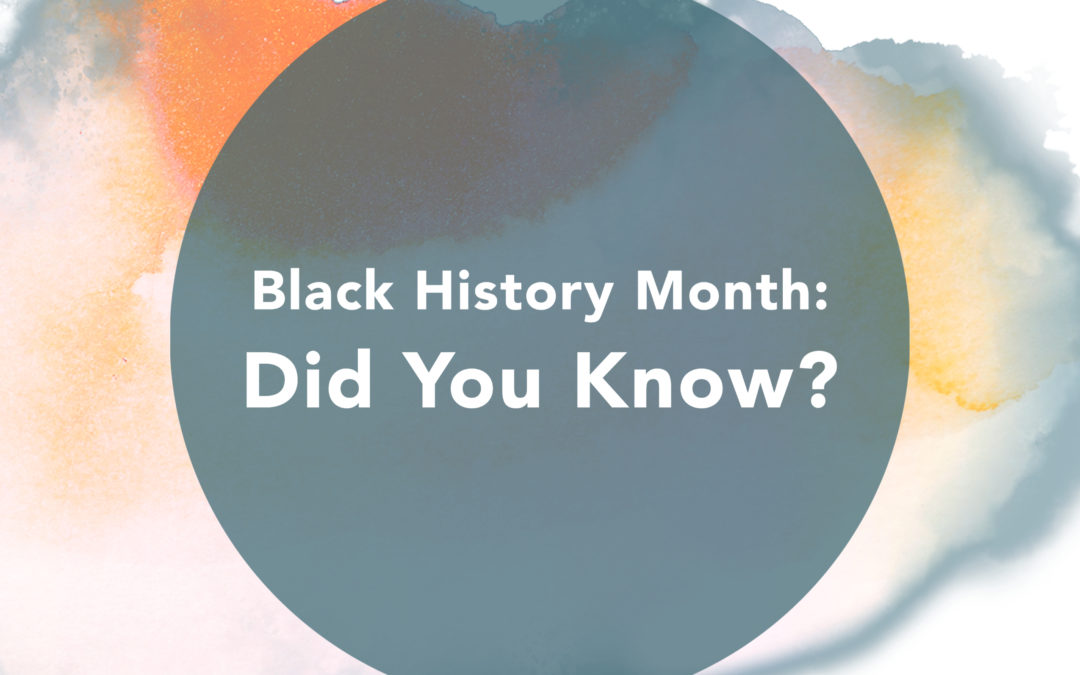The work to create a diverse and inclusive community is ongoing. It doesn't happen in a day, a week, a month, or even a year. It's forever-work that we're committed to while we continue to learn and listen. February is Black History Month and we're taking time to recognize and celebrate the history, accomplishments, and contributions made by Black Americans. We'll be sharing facts, events, and amplifying the Black community. Black history is American history should be celebrated all the time, so we hope that you can take what we share this month further by exploring more ways to highlight Black history and culture.
This week, we're sharing six random facts about Black history. This shortlist of facts does not even scrape the surface of American Black History, but we hope that learning will bring about more curiosity to discover more.
1. Black History Month began as “Negro History Week” in 1926
Carter G Woodson, an African American historian, scholar, publisher, and founder of the Association for the Study of African American Life (ASALH), established “Negro History Week” in 1926. The second week of February was chosen to coincide with the birthdays of Abraham Lincoln and Frederick Douglas.
As the civil rights movement took shape Negro History Week began to evolve into Black History Month. It was officially recognized as a month-long celebration by President Gerald Ford in 1976.
2. The 2021 theme for Black History Month is “The Black Family: Representation, Identity, and Diversity”
Since its establishment in 1976, every American President has designated February as Black History Month and endorsed a specific theme. The 2021 theme of The Black Family chosen by the ASALH looks at the complexity and dichotomy of the representation and portrayal of black families specifically how it has “been reverenced, stereotyped, and vilified from the days of slavery to our own time.”
To read more on the 2021 Black History Month theme, click here.
3. Shirley Chisholm was the first Black woman elected to Congress in 1968 and the first major-party Black candidate for president
Long before Kamala Harris became the first highest-ranking Black female elected official in the United States, there was Shirley Chisholm. Chisholm became a member of Congress in 1968, representing the 12th congressional district for New York, and was an activist for minority groups including women and children During her time in Congress, she advocated for programs that would benefit inner cities, employment, and education. After four years in Congress, she announced her run for the presidency, becoming the first Black presidential candidate from a major party, and the first female candidate to run for the Democratic Party’s nomination. Shirley Chisolm faced three separate assassination attempts during her run for the presidency.
4. Interracial marriage in the United States was banned from 1664 until 1967
The colony of Maryland was the first to enact a law prohibiting interracial marriages in 1664, but other colonies quickly followed suit. The laws grew and evolved over the years with harsh punishments that included enslavement, exile, or imprisonment.
It wasn’t until three hundred years later during the case of Loving V. Virginia that the Supreme Court ruled that prohibiting interracial marriage on state and local levels was unconstitutional.
5. The iconic cartoon character Betty Boop was inspired by a Black jazz singer in Harlem
Betty Boop was introduced in 1930 by cartoonist Max Fleischer. Her character is best known for her revealing dress, curvaceous figure, and signature “Boop Oop A Doop” vocals. The inspiration for Fleischer’s cartoon has been traced back to Esther Jones who performed regularly in New York’s Cotton Club during the 1920s. Jones went by the name “Baby Esther” and was known for her vocal style of using “boops” and other childlike scat sounds.
6. Martin Luther King Jr. improvised the most iconic part of his “I Have a Dream” speech
The written version of Martin Luther King Jr.’s speech given on August 28, 1963, did not initially include the “I have a dream” language that many have commonly heard. King was considering the words but they ultimately did not make it into his final draft. Yet, in front of the Lincoln Memorial that day, perhaps inspired by the 250,000 civil rights supporters, he fortuitously decided to use the language that would forever make history.
Information gathered for this post was sourced from the following:
2021 WorkplaceDiversity.com
2021 A&E Television Networks, LLC.
2019 Public Broadcasting Service (PBS)
2021 Hearst Magazine Media, Inc.
2021 A&E Television Networks, LLC
2020 ASALH

